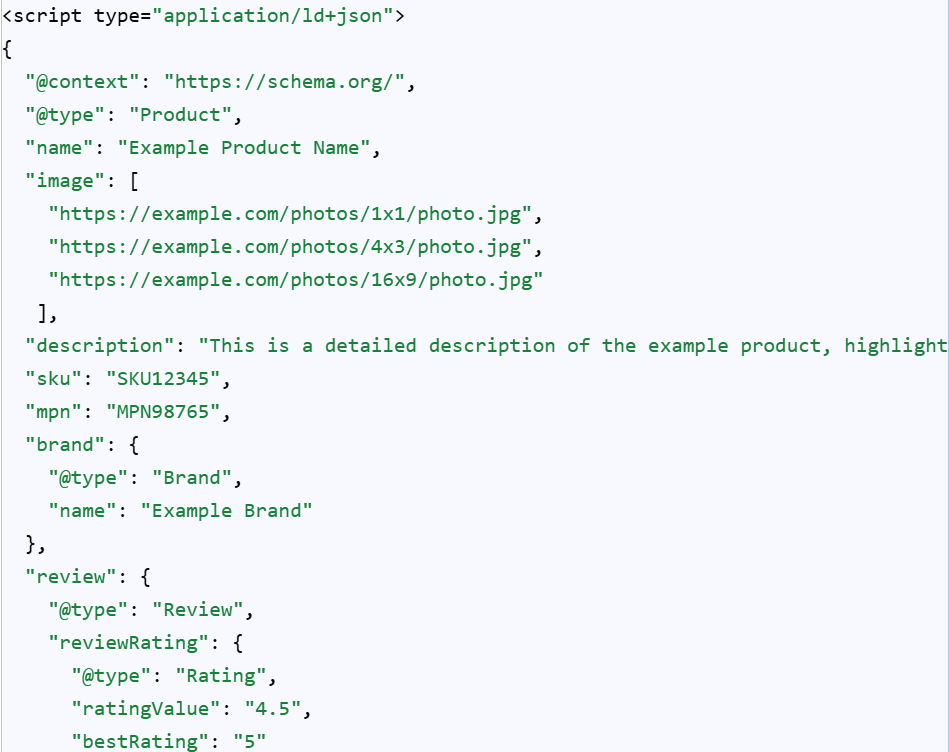
Rich Snippets vs. Schema Markup: What’s the Difference?
If you’ve ever looked up your business on Google and wondered why some results display star ratings, product prices, or event dates while others don’t, you’re not alone. The confusion often stems from two terms that sound similar but serve different purposes in SEO: schema markup and rich snippets. They’re related, but not interchangeable. Schema markup is the code that helps search engines understand your website’s content, while rich snippets are the visual enhancements Google may show in search results when that understanding pays off. Let’s explore how they work together and why implementing schema markup is crucial, even though it doesn’t always guarantee those attention-grabbing rich snippets.
What Is Schema Markup?
Schema markup is the structural foundation that enables rich snippets to appear. It’s a coded language that gives context to your web content, helping Google understand what’s on your page beyond just plain text.
The Foundation of Structured Data

At its core, schema markup acts as a shared language between your website and search engines. While people can easily grasp what a page is about just by reading it, Google’s crawlers need additional context. Schema markup provides that context through structured data — a standardized format that explains what each piece of content represents. This language was developed through a collaborative project known as Schema.org, supported by Google, Bing, Yahoo, and Yandex. Most modern websites use the JSON-LD format, a lightweight code snippet embedded in a page’s HTML. It tells search engines things like, “this is a product,” “this is a review,” or “this is an event.”
How Schema Works Behind the Scenes
Even though schema markup lives within your site’s code, users never see it directly. It’s invisible to visitors but invaluable to search engines. Think of it as placing labels and explanations behind your content to clarify meaning. Instead of merely reading text, Google’s systems can identify entities and relationships such as a product’s price, availability, or customer rating. This deeper understanding helps determine whether your page qualifies for enhanced search features like rich snippets.
What Are Rich Snippets?
Here’s what happens when Google uses schema markup data to enhance your listings, resulting in what we call rich snippets.
Enhanced Visuals in Search Results

Rich snippets are the upgraded, more visually appealing versions of standard search listings. They include extra information pulled from your structured data, such as ratings, images, prices, FAQs, or event details. For instance, an eCommerce site using proper Product schema might show star ratings, prices, and stock availability right beneath the page title in Google results. A recipe page could display cooking time, calorie count, and even a thumbnail image. These enhancements not only make your listing stand out but also help users find relevant information more quickly.
The Role of Google’s Algorithms
It’s important to remember that schema markup is a suggestion, not a command. Google’s algorithms decide whether to display a rich snippet based on factors such as content quality, site authority, and relevance. You can have a perfectly implemented schema, but if Google determines that your content is untrustworthy, duplicated, or lacks sufficient value, it may choose not to show a rich snippet. In short, schema markup enables rich snippets; it doesn’t guarantee them.
Schema Markup Enables Rich Snippets—But Doesn’t Guarantee Them
This is where many people get confused. Adding schema markup is important, but it’s not a magic switch that forces Google to show rich snippets.
Relationship Between Schema and Rich Snippets
Think of schema markup as the ingredients in a recipe, and rich snippets as the final dish Google serves to searchers — but only if it approves the recipe. You can have all the right ingredients (schema), but Google’s algorithm decides whether to display the finished product (rich snippet). This analogy helps explain why two websites with identical schema might not both get rich snippets. One might have better content quality, clearer structure, or more authority, all of which influence Google’s decision.
When Schema Is Ignored by Search Engines
Not all schema types lead to visible rich snippets. Some are purely informational, helping Google categorize your page but not necessarily enhance it visually. Additionally, schema markup can fail to produce results if it’s incorrectly formatted, misused, or contains inconsistencies with the visible page content. For example, marking up fake reviews or unrelated information can cause Google to ignore your markup entirely, or worse, penalize your site.
Common Types of Schema That Create Rich Snippets
Schema.org offers hundreds of schema types, but only some unlock structured data SEO and lead to search appearance optimization. Here are the most common ones you’ll see in action.
Product and Offer Schema
This type of schema is used on eCommerce or service pages to display key details such as price, availability, and customer reviews. It’s what allows search listings to show “In Stock,” star ratings, or discounted prices, giving potential customers valuable insights before they click.
FAQPage and HowTo Schema
These are some of the most interactive forms of structured data. FAQPage schema enables the expandable “accordion” questions and answers you often see beneath search results. HowTo schema helps Google display step-by-step instructions, often with images or numbering. Both increase visibility and make your results more interactive.
Review and AggregateRating Schema
Used to showcase star ratings and review summaries, this schema type can dramatically boost your click-through rate. When users see others’ positive feedback directly in search results, it instantly builds trust.
Event Schema
Ideal for promoting upcoming events, this schema highlights event names, dates, locations, and ticket details directly in Google Search. It’s perfect for businesses hosting workshops, webinars, or live shows.
Recipe and Video Schema
Recipe schema lets cooking blogs show prep time, calorie counts, and images in search results, while Video schema helps videos appear with thumbnails, durations, or even key moments. These formats are especially powerful for creators and food bloggers aiming for visual engagement.
Tools to Implement and Test Schema Markup
You don’t have to be a developer to add structured data to your site. A variety of tools make it accessible for marketers and small businesses.
Schema Generators and Plugins
If you’re using WordPress, plugins like Yoast SEO and Rank Math simplify the process with built-in schema templates. You can also use web tools like the Merkle Schema Generator to create JSON-LD code snippets you can paste into your site manually.
Testing Tools

Once added, it’s essential to test your schema for errors. Use the Google Rich Results Test to check whether your page is eligible for rich snippets. The Schema.org Validator is another reliable tool for ensuring your structured data follows official standards. Regular testing helps maintain accuracy and ensures your code remains compliant as Google’s guidelines evolve.
How Rich Snippets Improve SEO Performance
Rich snippets don’t directly boost rankings, but their effect on engagement, visibility, and user trust can significantly enhance your structured data SEO performance over time.
Higher Click-Through Rates
Search results that include stars, images, or extra details naturally attract more attention and clicks. This increased click-through rate (CTR) signals to Google that users find your content relevant, which can indirectly strengthen your overall search visibility.
Better User Trust and Experience
When searchers can see product information, ratings, or quick answers right in the results, it builds confidence before they even visit your site. This added transparency improves user experience and helps establish credibility from the very first interaction.
Potential Impact on Rankings (Indirect)
While Google doesn’t give ranking boosts simply for adding schema markup, rich snippets often lead to better engagement and lower bounce rates. These positive behavioral signals can, over time, contribute to stronger organic visibility and sustained SEO growth.
Rich Snippets vs. Featured Snippets: Don’t Get Confused
It’s easy to mix up rich snippets and featured snippets, but they serve different purposes. Rich snippets are enhanced search listings created through schema markup. Featured snippets, on the other hand, are special answer boxes that appear at the very top of Google’s results, summarizing key information directly from a webpage. Schema markup doesn’t influence featured snippets directly; those are determined by your content’s quality, clarity, and structure rather than code. Still, both improve visibility and build authority when implemented effectively.
Final Take: Use Schema Strategically to Earn Rich Snippets
At the end of the day, schema markup is a powerful tool for improving your search appearance optimization, but it’s not a magic switch. Implementing schema correctly, testing it regularly, and pairing it with high-quality content gives you the best chance of earning rich snippets. Think of it as part of a broader SEO strategy that combines technical precision with valuable content.
Ready to take your structured data SEO to the next level? The team at Decisive Design can help you implement, audit, and optimize schema markup so your content earns the visibility it deserves. Reach out today and make your search results stand out from the crowd.
FAQs About Rich Snippets Vs. Schema Markup
What is the difference between rich snippets and schema markup?
Schema markup is the code that helps search engines understand your content, while rich snippets are the enhanced search results Google may display using that data.
Does schema markup guarantee rich snippets?
No. Schema enables rich snippets, but Google decides whether to show them based on content quality, relevance, and adherence to its guidelines.
How do I get rich snippets in Google?
Implement valid schema markup, create high-quality and relevant content, and test your structured data regularly. With consistency, Google may reward your efforts with rich snippets.
What types of schema markup can create rich snippets?
Common types include Product, Review, FAQPage, HowTo, Recipe, and Event schema. These are among the most effective for improving search engine optimization.
Are rich snippets and featured snippets the same?
No. Rich snippets are enhanced listings powered by schema markup, while featured snippets are answer boxes that appear at the top of search results, selected algorithmically from webpage content.